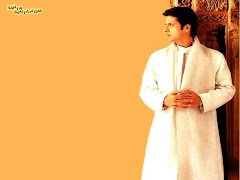
According to archaeologists and anthropologists, the earliest clothing likely consisted of fur, leather, leaves or grass which were draped, wrapped or tied around the body. Knowledge of such clothing remains inferential, since clothing materials deteriorate quickly compared to stone, bone, shell and metal artifacts. Archeologists have identified very early sewing needles of bone and ivory from about 30,000 BC, found near Kostenki, Russia in 1988.[citation needed] Dyed flax fibers that could have been used in clothing have been found in a prehistoric cave in the Republic of Georgia that date back to 36,000 BP.[4][5]
Scientists are still debating when people started wearing clothes. Ralf Kittler, Manfred Kayser and Mark Stoneking, anthropologists at the Max Planck Institute for Evolutionary Anthropology, have conducted a genetic analysis of human body lice that suggests clothing originated quite recently, around 107,000 years ago. Body lice is an indicator of clothes-wearing, since most humans have sparse body hair, and lice thus require human clothing to survive. Their research suggests the invention of clothing may have coincided with the northward migration of modern Homo sapiens away from the warm climate of Africa, thought to have begun between 50,000 and 100,000 years ago. However, a second group of researchers using similar genetic methods estimate that clothing originated around 540,000 years ago (Reed et al. 2004. PLoS Biology 2(11): e340). For now, the date of the origin of clothing remains unresolved.[citation needed]
Some human cultures, such as the various people of the Arctic Circle, until recently made their clothing entirely of prepared and decorated furs and skins. Other cultures have supplemented or replaced leather and skins with cloth: woven, knitted, or twined from various animal and vegetable fibers.
See also: weaving, knitting, and twining
Although modern consumers may take the production of clothing for granted, making fabric by hand is a tedious and labor intensive process. That the textile industry was the first to be mechanized during the Industrial Revolution attests to this fact; before the invention of the powered loom, textile production took many hours and callused many hands.
Different cultures have evolved various ways of creating clothes out of cloth. One approach simply involves draping the cloth. Many people wore, and still wear, garments consisting of rectangles of cloth wrapped to fit — for example, the dhoti for men and the saree for women in the Indian subcontinent, the Scottish kilt or the Javanese sarong. The clothes may simply be tied up, as is the case of the first two garments; or pins or belts hold the garments in place, as in the case of the latter two. The precious cloth remains uncut, and people of various sizes or the same person at different sizes can wear the garment.
Another approach involves cutting and sewing the cloth, but using every bit of the cloth rectangle in constructing the clothing. The tailor may cut triangular pieces from one corner of the cloth, and then add them elsewhere as gussets. Traditional European patterns for men's shirts and women's chemises take this approach.
Modern European fashion treats cloth much more prodigally, typically cutting in such a way as to leave various odd-shaped cloth remnants. Industrial sewing operations sell these as waste; home sewers may turn them into quilts.
In the thousands of years that humans have spent constructing clothing, they have created an astonishing array of styles, many of which we can reconstruct from surviving garments, photos, paintings, mosaics, etc., as well as from written descriptions. Costume history serves as a source of inspiration to current fashion designers, as well as a topic of professional interest to costumers constructing for plays, films, television, and historical reenactment



No comments:
Post a Comment